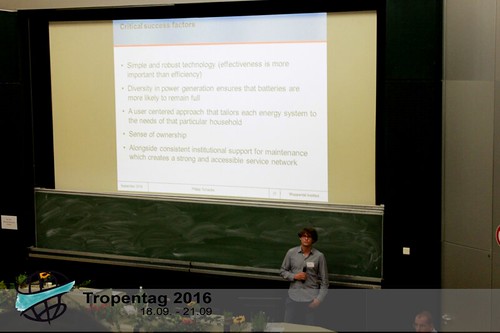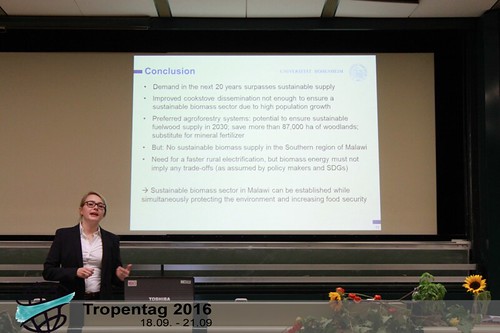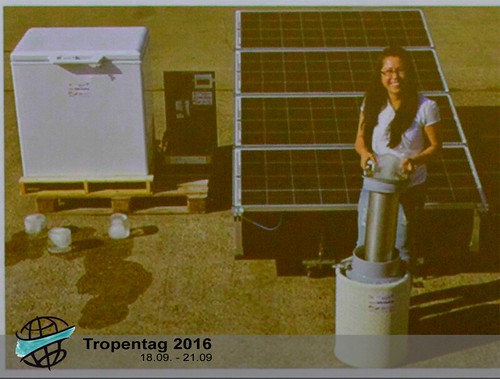Poscher's blog
Delivering wind energy to small-scale farmers in Argentina: why did it fail?
Wed, 09/21/2016 - 12:17 — PoscherIn one of these researched areas, 80% of the systems were not running anymore.
What happened?
-Broken blades due to the very strong local wind: an inadequate system for this area.
-Batteries ran flat because of no additional power sources
-Other technical breaks: problem arose because efficient over effective systems were chosen
Social/local reasons:
-It was not possible to repair the systems. Spare parts were far away located, young people moved to the cities leading to a lack of knowledge for maintaining and repairing the systems.
-Forbidden maintenance the systems. Farmers as end-users but not as owners.
-Fund of the project did not reach the farmers and the study site. Furthermore, equipment was stolen by farmers who pretended to be government officials.
Malawi in the future: will people be able to keep cooking?
Wed, 09/21/2016 - 11:40 — PoscherThe main driving force of an increasing demand was identified to be the strong population growth in Malawi. Through modeling the demand and supply for the future, a big gap between the two was found, threatening the biomass availability. Even though other (not yet used) sources like crop residues may be used in the future, the demand will still exceed the supply up to a very high extent.
What is the government doing? Is it enough to ensure enough fuel for the Malawian people in the future?
The answer, given by the research, is that the planned methods will not be sufficient. The main strategy is the provision of efficient cooking stows to decrease the amount of fuel needed for cooking. The different models, with an optimistic and pessimistic scenarios, showed that, even with a high acceptance of the cooking stows, the supply gap remains.
Despite this finding, the research went further and provided a solution: different, individualizable agroforestry systems to include woody biomass in the farms to increase the fuelwood supply.
From the eyes of a small-scale milk trader: how to improve the milk value chain?
Wed, 09/21/2016 - 09:48 — PoscherYou are facing quite lots of difficulties, and if the quality of the milk is bad, you cannot sell it anymore. You bear the risks, you lose money if the milk gets bad. Controlling the product by smell, taste, texture and density without technical support needs much expertise.
Traveling to the producers, controlling and keeping the quality to resell to milk stations is certainly a hard job. So, how to improve the situation?
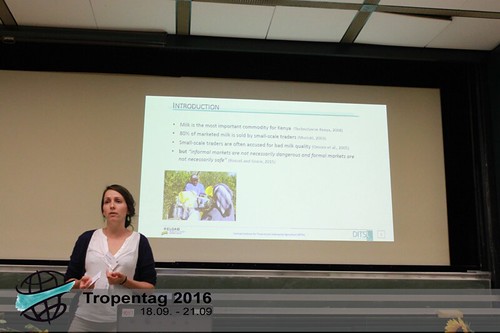 The presented research takes a closer look at those limitations and possibilities for improving the situation of small-scale milk trading from the perspective of a local milk trader. What are the results?
The presented research takes a closer look at those limitations and possibilities for improving the situation of small-scale milk trading from the perspective of a local milk trader. What are the results?
Milk + Sun + Development = cooler, healthier milk? Local, solar-powered milk cooling
Tue, 09/20/2016 - 16:12 — Poscher
How does it work: The solar-powered energy is stored, transferred to a refrigerator and then used to produce ice. The ice then is put into a special designed milk container without having direct contact with the milk. By that, it cools down the milk through additional isolation to around 20 degrees over a long period.
My personal highlight of Tropentag so far: Workshop 9 on Forest and Tropical Trees' Conservation
Mon, 09/19/2016 - 21:35 — PoscherBeside the great job of the presenters, two more reasons why it succeeded in my mind were:
1st. The discussions that critically analyzed the research finding and its (limited) impact on development 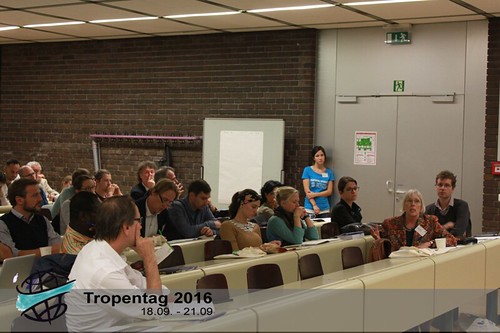
2nd. The closeness and approachability of the panel experts concearning ideas and knowledge exchange during the coffe break and afterwards.
Guided Poster section 3.1
Mon, 09/19/2016 - 19:26 — PoscherIn a very short X minutes wrap up, a big diversity and good mix of presentations and topics from all over the world were presented.
7 Posters from latin America, 4 Posters from Asia and 3 from Africa were displaied. They included topics of Forest Establishment, Agroforestry, Fodder, Policies, Community Forestry, Livelihood Enhancement and Landscape Restoration.
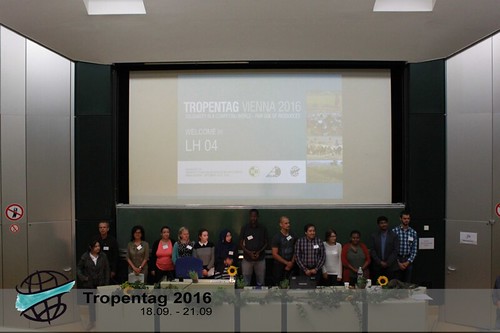 Even though the short time didn't allow to dive deeper into the topics, the presentations have definitely given hope to see the next generation of researchers growing up, continuing the strive to gain knowledge and foster improvement.
Even though the short time didn't allow to dive deeper into the topics, the presentations have definitely given hope to see the next generation of researchers growing up, continuing the strive to gain knowledge and foster improvement.
For an overview of the presenters with all the related poster just have a look at https://www.flickr.com/photos/tropentag/albums/72157672957864691/with/29...





